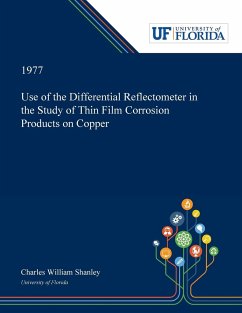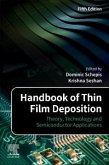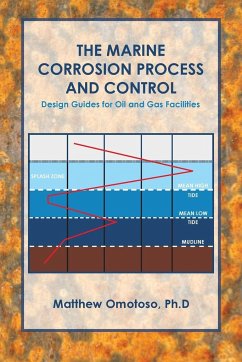Abstract: An investigation was undertaken to examine the feasibility of using the technique of differential ref lectometry to identify and study thin film corrosion products on metal substrates. Differential ref lectometry is a form of modulation spectroscopy which measures the normalized difference in reflectivity between two samples, or two adjacent areas of the same sample. In these experiments, one half of each sample was protected by an insulating lacquer while the other half was allowed to form a thin film corrosion product. When the lacquer was subsequently removed, the normalized difference in reflectivity as a function of wavelength was measured over the range A = 800 nm to 200 nm (1.55 eV to 6.20 eV) . The use of a transparent lacquer permits monitoring of the film in situ. Because of the differential nature of the technique, the effect of the metal substrate is subtracted out, so that the resulting differential reflectogram is related to the absorption spectrum of the corrosion product. The similarity in the structure between reflection, absorption, and differential reflectivity spectra substantiates this viewpoint. In these experiments, copper was chosen as the metal on which the thin film corrosion products were grown. Characteristic spectra for the copper oxides Cu~0 and CuO were obtained, and were used to help define the boundaries of the regions of stability of the copper-water Pourbaix diagram. In addition, the evolution with time of a Cu ? film was monitored in situ. It was established that in the thickness range of o passive and semipassive films (d = to 200 A) differential ref lectometry produces a unique spectrum for each corrosion product, and that the intensity of the structure in the differential reflectogram is related to the thickness of the film. A method is described for calculating the differential ref lectograms of thin film corrosion products for various film thicknesses if the optical constants of the film and substrate are known. Sample spectra are calculated for various thicknesses of a CuO film on a copper substrate. These spectra compare favorably with experimental curves. Dissertation Discovery Company and University of Florida are dedicated to making scholarly works more discoverable and accessible throughout the world. This dissertation, "Use of the Differential Reflectometer in the Study of Thin Film Corrosion Products on Copper" by Charles William Shanley, was obtained from University of Florida and is being sold with permission from the author. A digital copy of this work may also be found in the university's institutional repository, IR@UF. The content of this dissertation has not been altered in any way. We have altered the formatting in order to facilitate the ease of printing and reading of the dissertation.
Hinweis: Dieser Artikel kann nur an eine deutsche Lieferadresse ausgeliefert werden.
Hinweis: Dieser Artikel kann nur an eine deutsche Lieferadresse ausgeliefert werden.



![Report on the Copper Deposit of Grand Manan, Bay of Fundy [microform] Report on the Copper Deposit of Grand Manan, Bay of Fundy [microform]](https://bilder.buecher.de/produkte/65/65554/65554576m.jpg)
![Report on the Copper Deposits of the Eastern Townships of Quebec With a Review of the Igneous Rocks of the District [microform] Report on the Copper Deposits of the Eastern Townships of Quebec With a Review of the Igneous Rocks of the District [microform]](https://bilder.buecher.de/produkte/66/66196/66196717m.jpg)
![The Copper Mines of Lake Superior [microform] The Copper Mines of Lake Superior [microform]](https://bilder.buecher.de/produkte/65/65587/65587140m.jpg)

![Report on the Copper Deposits of the Eastern Townships of the Province of Quebec [microform] Report on the Copper Deposits of the Eastern Townships of the Province of Quebec [microform]](https://bilder.buecher.de/produkte/65/65510/65510132m.jpg)
